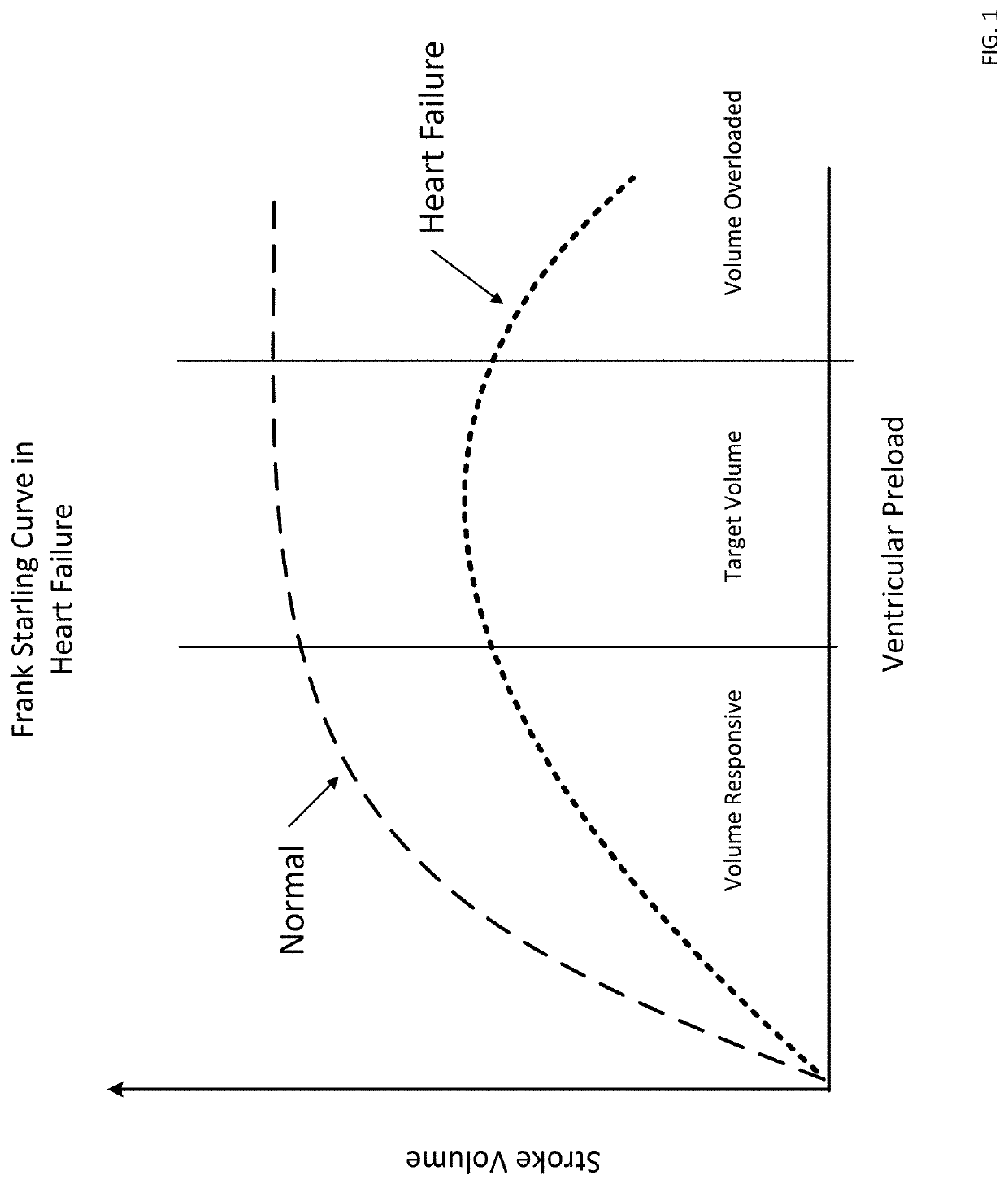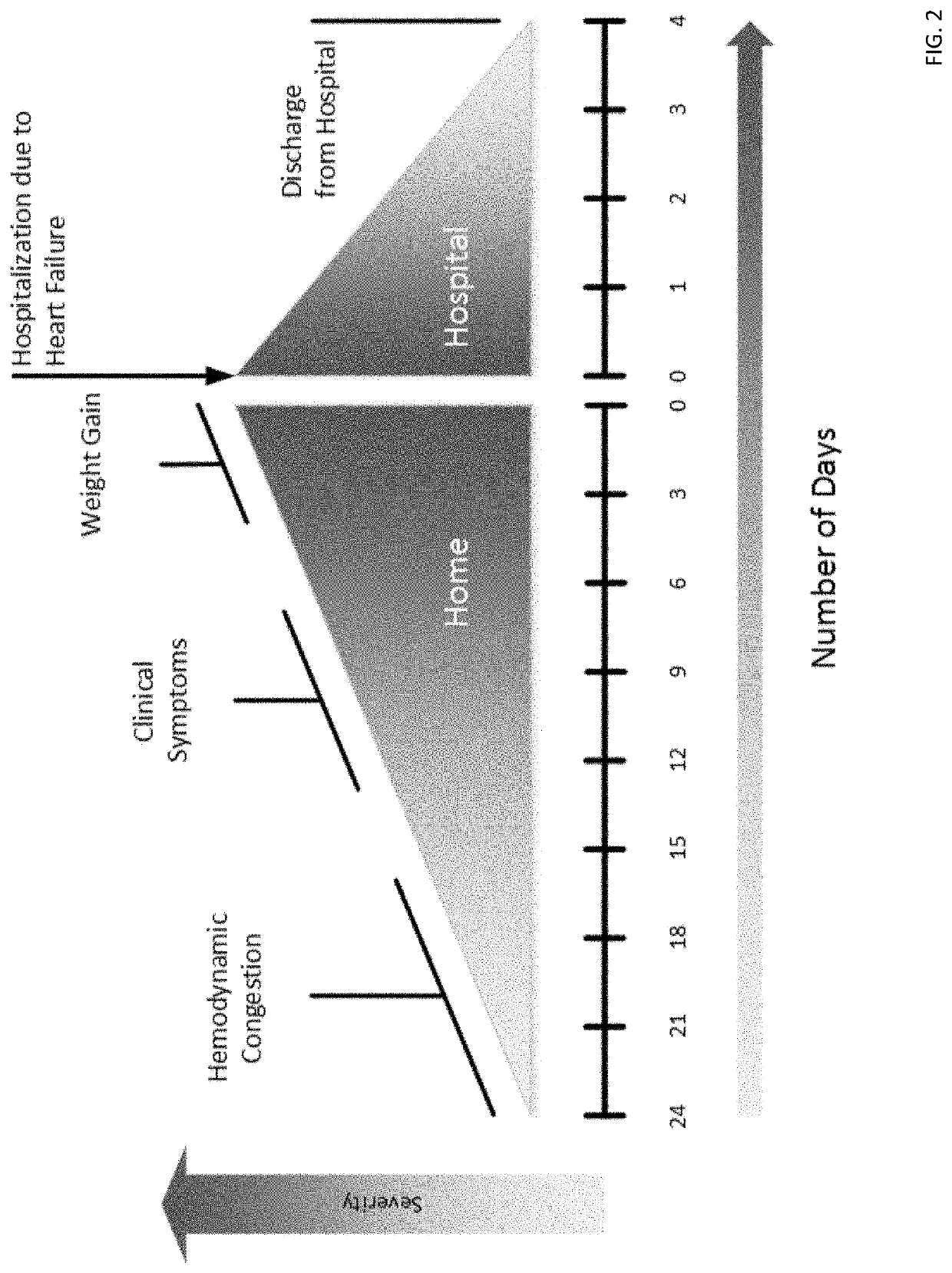Methods and Apparatuses for Central Venous Pressure Measurement Status
a technology of central venous pressure and measurement status, which is applied in the field of methods for determining central venous pressure, can solve the problems of prone to measurement, difficult jvp measurement, and invasive cvp measurement, and achieve the effect of avoiding fluid overload and facilitating the management of heart failure patients
- Summary
- Abstract
- Description
- Claims
- Application Information
AI Technical Summary
Benefits of technology
Problems solved by technology
Method used
Image
Examples
example embodiments
[0180]Vein Imaging with Controlled Arm Raise
[0181]A system and method utilizing a controlled arm raise can be implemented in various ways, the following is an illustration of one example embodiment. FIG. 28 shows the combined use of a venous imaging system and a 3-dimensional imaging system for making anatomical measurements. As the subject approaches the system and sits down in FIG. 28A, a forward-facing camera 1201 is used to capture the anatomical dimensions and landmarks of the subject. The optical system 1202 images the tissue in a manner that enables venous volume determination. The system can then acquire images while raising the arm in a defined and controlled manner. FIG. 28B shows the arm being raised to the point above central venous pressure.
[0182]The use of a controlled arm motion helps to mitigate the impact of physiological delays in the response of the system. In one use scenario, the system can raise the arm in a series of small discrete steps, waiting for equilibra...
PUM
 Login to View More
Login to View More Abstract
Description
Claims
Application Information
 Login to View More
Login to View More - R&D
- Intellectual Property
- Life Sciences
- Materials
- Tech Scout
- Unparalleled Data Quality
- Higher Quality Content
- 60% Fewer Hallucinations
Browse by: Latest US Patents, China's latest patents, Technical Efficacy Thesaurus, Application Domain, Technology Topic, Popular Technical Reports.
© 2025 PatSnap. All rights reserved.Legal|Privacy policy|Modern Slavery Act Transparency Statement|Sitemap|About US| Contact US: help@patsnap.com



